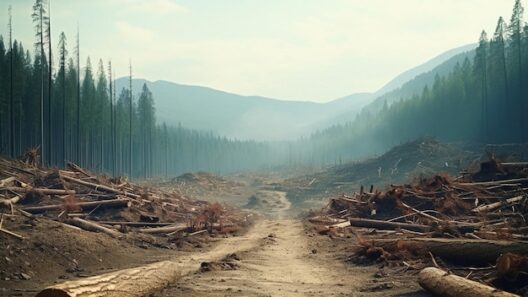As global temperatures continue to rise, communities around the world face mounting pressures that threaten not only their environment but also their way of life. The phenomenon of climate change has infiltrated numerous aspects of our ecosystems, imposing a myriad of challenges that require immediate attention and collective action. How can residents of affected areas adapt while simultaneously advocating for broader systemic changes? This conundrum introduces a significant challenge: how to balance local environmental advocacy with the overarching need for global cooperation.
The repercussions of climate change manifest at local levels through altered weather patterns, disrupted ecosystems, and diminishing biodiversity. For instance, once predictable seasonal shifts are now riddled with anomalies—extreme rainfall events and protracted droughts challenge both urban and rural communities alike. These alterations have dire implications for agriculture, an industry that relies on stable climate conditions. Farms can suffer crop failures, leading to food insecurity and economic strife. Therefore, what can be done locally to mitigate these global changes?
Communities, particularly those in susceptible regions, are increasingly recognized as critical agents of change. Localized initiatives aimed at reducing carbon footprints, such as promoting sustainable agriculture and enhancing public transportation, are gaining momentum. Urban areas, in particular, play an integral role since they contribute predominantly to greenhouse gas emissions. A community that embraces green technologies can set a precedent for others, fostering an atmosphere of innovation and resilience.
However, these changes are not without their challenges. The implementation of sustainable practices often necessitates substantial investment and a cultural shift among community members. For example, transitioning to clean energy sources can be daunting. Not only must communities grapple with the initial costs of renewable energy infrastructure, but they must also cultivate public support for these initiatives—a task more arduous than it may seem.
Moreover, the concept of environmental justice cannot be overlooked. Marginalized communities often bear the brunt of environmental degradation and have less capacity to adapt due to economic constraints. Thus, initiatives must be inclusive, ensuring that all community voices are heard, particularly those historically underrepresented. Can a community truly address climate change if it neglects parts of its populace? This query elevates the discourse surrounding equitable environmental solutions and underscores the necessity of collaboration across social strata.
In addition to social considerations, community resilience hinges on local biodiversity. Protecting native species and habitats is crucial not only for ecological balance but also for maintaining the region’s economic vitality. The preservation of biodiversity can enhance a community’s ability to withstand climate impacts. For instance, urban areas that integrate green spaces not only improve air quality and reduce urban heat but also foster habitats for pollinators, which are essential for food production. Therefore, engaging local citizens in conservation efforts can yield compounding benefits—from education to active participation.
But, as communities initiate these efforts, they may encounter pushback from industries resistant to change. The conflict often arises between economic development and environmental conservation. How can local leaders negotiate a path that accommodates both economic growth and environmental integrity? It may require them to be vocal advocates for sustainable policies, such as promoting legislation that imposes stricter regulations on polluting industries while incentivizing businesses to embrace green practices.
Another noteworthy aspect of community resilience against climate impacts is fostering awareness through education. Schools can serve as platforms for instilling environmental stewardship in younger generations. Educational programs focused on the real-world implications of climate science can empower students to become advocates in their own right. Initiatives such as school gardens or community clean-ups not only teach responsibility but also engender a sense of ownership over the environment. In doing so, communities are not just preparing for climate change; they are also fostering a culture deeply rooted in sustainability.
Additionally, the advent of technology offers new avenues for communities to tackle climate issues proactively. Innovations in data collection and analysis can facilitate informed decision-making. For example, utilizing satellite imagery to monitor land use changes can help identify areas at risk of degradation. Moreover, social media platforms can galvanize community action and spread awareness about pressing environmental issues, influencing public policy and individual behavior alike.
However, reliance on technology requires careful consideration. The digital divide presents a significant barrier; communities without adequate access to technology may find themselves marginalized in discussions about climate solutions. Addressing this gap is crucial in any strategy aimed at creating collective action. Can true community engagement flourish in an environment rife with inequalities? This reality compels leaders to champion inclusive digital literacy programs alongside environmental initiatives.
Ultimately, the interplay between local community pressures and global climate challenges beckons a nuanced approach. While local actors play a pivotal role in addressing environmental degradation, they cannot do so in isolation. It calls for unity across regions, countries, and communities. Realizing collective goals requires not only local action but also global cooperation—synergizing efforts to craft comprehensive policies that acknowledge the interconnectedness of our ecological fates.
As communities navigate these tumultuous waters, they must remain steadfast in their commitment to sustainable practices while advocating for structural change. Balancing local initiatives with global strategies will indeed pose challenges. However, these challenges present opportunities for collaboration and solidarity that could redefine how we tackle climate change, ensuring a healthier planet for generations to come.







